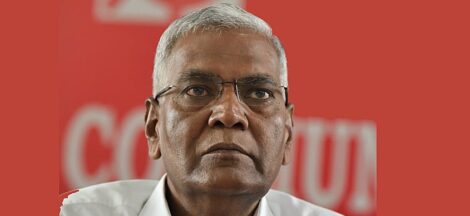By Dr. Gyan Pathak
The latest EPFO data released last week shows that formal job generation in India has been a casualty since 2018-19 when new EPF subscribers joining the EPF were 13.94 million but had fallen to13.85 million in the year 2022-23. During this period there were great fluctuations showing that fewer decent jobs were created in informal sector and those created belonged to low category.
If we look at the number of new members who joined and exited the EPF, it could be puzzling. In the year 2018-19 the number of workers exited from membership was 12.29 million since September 2017, while in 2022-23, this number was 13.36 million. This shows very large fluctuation in the formal job market of the country, and thereby the relatively more secure and covered under social security net were not so secure.
According to the Employees’ Provident Fund Organisation’s Net Payroll Data, the total number of EPF members were 13.85 million in the country while we have over 900 million people in working age population, out of whom only about 400 million are in actual jobs, which are counted as employed, and which included even those who had gotten 1 hours of paid jobs in a week. This presents a very frightening picture of the Indian job market.
In 2022-23, a total of 77570 workers of less than 18 years of age became members of EPF, workers between the age of 18-21 were 3.2 million and between 22-25 were 3.6 million. It is to be noted that every year about 20 million people enter the job market. Obviously, the new job generation in formal sector is very unsatisfactory.
Moreover, the members of the EPFO are increasingly dissatisfied on account of theirs not getting enough financial security both in terms of their fund settlement claims, and the family pension they get. In 2022-23, EPFO rejected 34 per cent of the claims made by the subscribers, that is one in every three. It is a very high rate of rejection which has risen sharply from only 13 per cent in 2017-18. In 2018-19, EPFO rejected 18.2% of all final settlement claims made by its subscribers. This rose to 24.1% in 2019-20, 30.8% in 2020-21 and 35.2% in 2021-22.
It is a serious matter because EPFO is the largest state-run retirement fund with around 290 million workers under the scheme of which 68 million are active subscribers. In addition to this EPFO subscribers have issues with their pension fund also. It is only recently, the Union Ministry of Finance has turned down a request to increase the monthly minimum pension under the Employees Pension Scheme (EPS) from Rs 1000 to Rs 2000.
The EPS is also handled under EPFO. There are only 7.55 million pensioners as per Annual Report 2022-23, which shows that only a fraction of India’s workers are eligible under EPS, 3.64 per cent receiving pensions up to Rs 1000 per month, while 1.17 million receive Rs 1001-Rs 1500. Around 0.868 million pensioners receive pension between Rs 1501 and Rs 2000 per month and only 26,769 receive more than Rs 5000 per month. Department related Parliamentary standing committee had also found the pension amount too little.
All theses show that apart from little new formal job generation, those who are in formal job under social security covers, are actually getting too little social security cover. Employment growth has been dismal as is also evident from a recent study by D TripatiRao of the Indian Institute of Management (IIM), Lucknow, prepared in collaboration with researchers from Birla Institute of Technology and Science, and Union Ministry of Agriculture and Farmers Welfare. It was aptly said in the paper that India’s economy is witnessing a stagnating employment growth rate, weakening employment elasticity, slow structural transformation, and brewing structural problems in the country’s labour market, such as low female labour force participation and rise in the unemployment rate.
The researchers have found after analysing the NSSO employment and unemployment survey, and Periodic Labour Force Survey of the Union Ministry of Labour and Employment that the economic growth, rather than creating more jobs, has resulted in the net labour displacement. The paper published in the Indian Journal of Labour Economics, asserted that the agricultural sector, though employing most youth, contributed low value-added to the overall economy, resulting in significant employment challenges.
There is significant gender disparity in the labour market and a growing level of unemployment for highly educated youth than the less educated, the study pointed out. “In 2020–21, the total labour force in India stood at an estimated 556.1 million. Out of this total, 292.2 million (54.9%) were self-employed, 121.1 million (22.8%) were in regular employment and an estimated 118.6 million (22.3%) were in casual employment. The number of unemployed people declined from 26.4 million in 2019–20 to 24.3 million in 2020–21 in India, while an additional 119 million people were not added to the potential labour force during the same. The estimates show that self-employment has been the chief driver of the Indian job market.”
Unemployment rises with education level, the report said, adding “the unemployment rate for the illiterate and less educated class (below primary) was 0.57% and 1.13% respectively while, for the highly educated class (graduates and above), it was 14.73% in 2020–21 for the age group ‘15–29 years’. This pattern follows across the years.”
It is worth noting that the latest unemployment rate as per CMIE data for February 25, 2024 on 30 day moving average basis is 7.8 per cent, which is 2 per cent higher than the last month. The last decade proved to be the era of joblessness in India, worst in the independent India, and new job generation in both the formal and informal sector remained dismal. (IPA Service)



